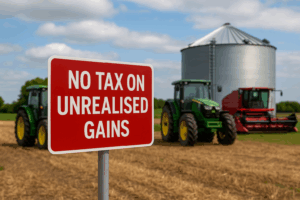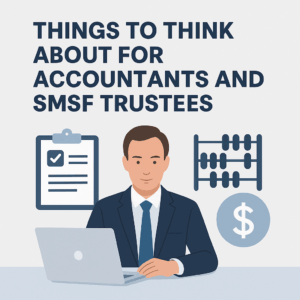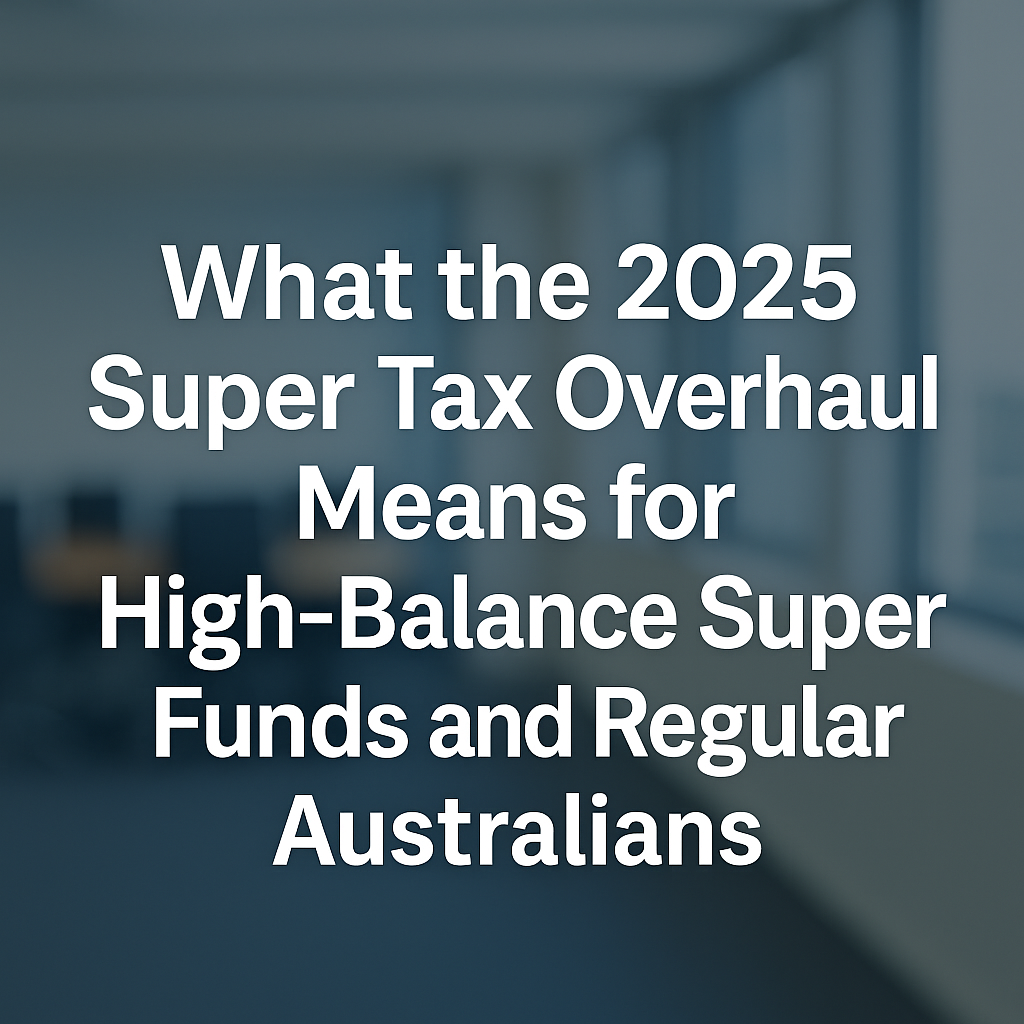The Federal Government has said that it will change how it taxes superannuation funds with large balances.
The updated Superannuation Tax Changes 2025 package, which goes into effect on July 1, 2026, adds indexation to the $3 million level, gets rid of the very controversial unrealised gains criterion, and adds a new upper-tier tax for balances over $10 million.
For accountants and financial counsellors, and their clients, these changes are more than just big news.
They change how wealthy customers set up their superannuation and stress how important it is to plan ahead for Self-Managed Super Funds (SMSFs).
Why the Super Tax Needed Rethinking
The Superannuation Tax Changes 2025 was first aimed at people with superannuation balances over $3 million.
It would have raised the concessional earnings tax rate from 15% to 30% on the part of their income that was over that amount.
The goal was to make things fairer between regular workers and people with multimillion-dollar fortunes. But the plan had problems:
- The $3 million limit wasn’t indexed, so its worth would slowly go down over time due to inflation, which would affect more Australians.
- The formula included unrealised capital gains, which meant that rises in paper value were taxed even if the asset had not been sold.
These two design problems caused a lot of confusion, especially for people who had property and farming equipment in Self-Managed Super Funds (SMSFs) that they couldn’t sell.
Accountants and business groups said that the law could lead to “tax without cash” situations, where people had to sell their assets only to pay an assessment.
Source: ABC News—Explaining Changes to the Superannuation Tax (October 2025)

1. Adjusting the $3 million limit for inflation
Starting on July 1, 2026, the $3 million balance cap will be automatically adjusted every year under the new rules.
This change makes sure that only individuals whose balances really outstrip inflation will be affected.
This keeps the original goal of justice without the problem of bracket expansion.
This means that accountants can make better long-term models.
When doing retirement predictions, it will be vital to take in predicted CPI adjustments so clients may understand at what point their balances may cross the indexed level.
2. No more tax on unrealised capital gains
The part of the original proposal that caused the most trouble has now been fully taken out.
Unrealised gains, or increases in the market value of assets that have not been sold, will no longer be counted as taxable income.
This change is especially crucial for rural and family-owned SMSFs, where land and machinery are commonly locked up in investments instead of cash.
It also brings things back in line with long-standing tax rules that say capital gains should only be taxed when they are realised.
Many industry groups, economists, and regional leaders criticised the government’s decision to back down, saying that it would hurt Australians who had a lot of assets but not much cash.
Source: The Guardian—Government Drops Plan for Unrealised Gains (Oct 2025)
3. A new $10 million tier for very high balances
There is now a new level for the limited number of Australians who have superannuation balances over $10 million.
The tax rate on earnings over these amounts will be raised from 30% to 40%.
This proposal will only affect a small number of superannuation members, but it shows that the government is focused on making things better at the top.
For most SMSF trustees, this adjustment doesn’t matter.
But it will be important for families with a lot of money and intergenerational trusts that use super as part of their long-term estate planning.
To lower their risk of being in the top tier, advisers should think about revisiting contribution limits, strategies for transitioning to retirement, and pension phase allocations.
Source: ABC News—Superannuation Tax Changes Explained (October 2025)
4. More help for people with low incomes
The October 2025 rules do more than just make headlines about high-balance accounts.
They also help lower-income Australians more through the Low-Income Superannuation Tax Offset (LISTO).
Starting on July 1, 2027, two big changes will happen:
- the income limit will go up from $37,000 to $45,000, and the
- maximum government co-contribution will go up from $500 to $810.
Superannuation Tax Changes 2025 provide businesses and employees even more reasons to keep putting money into superannuation, even if their incomes are low.
Sources: Australian Treasury—Reforms to Help Low-Income Workers (October 2025)

Things to think about for accountants and SMSF trustees
These changes show a return to common sense, but they also show how important it is to stay alert. Accountants should think about the following useful steps:
1. Look over the balance forecasts for clients who are close to the $3 million mark. Indexation gives you more options, but timing your contributions and withdrawals is still quite important.
2. Look over SMSF valuation policies again to make sure they are consistent and that reported balances don’t change too much.
3. Make plans for how to help clients with big, illiquid assets in their superannuation plans get cash when they need it. Even though unrealised gains are not included, the topic could start up again in the future.
4. For clients who are getting close to the new $10 million level, model intergenerational transfer scenarios to see where other arrangements, like discretionary trusts or investment corporations, would work better.
5. Teach customers with low incomes about the extended LISTO and co-contribution options so they can save the most money for retirement.
How Southern Cross Accounting Can Help
At Southern Cross Accounting, we focus on Superannuation Management and Tax Planning solutions that are in line with the changing rules of the ATO and Treasury.
Our consulting team helps customers stay in compliance while getting the most out of their contributions, pension plans, and SMSF liquidity.
We also do yearly Structure Reviews to make sure that your assets are safe and your taxes are as low as possible when laws change.
Call our office for a private review to get personalised advice on the Superannuation Tax Changes 2025 and how they might affect your finances.
Last Thoughts
The Federal Government’s new Superannuation Tax structure shows a more balanced and long-term way to handle money in retirement.
The policy is now more in accordance with both fairness and budgetary restraint because it brings back indexation, gets rid of the tax on unrealised gains, and gives more help to low-income workers.
The message to advisers is clear: rules are always changing, but a well-thought-out strategy keeps things stable.
Reviewing client structures now, before the start date in 2026, will let the transition go more smoothly and make sure that everyone is still following the rules under the new system.
Contents
- 1 Why the Super Tax Needed Rethinking
- 2 1. Adjusting the $3 million limit for inflation
- 3 2. No more tax on unrealised capital gains
- 4 3. A new $10 million tier for very high balances
- 5 4. More help for people with low incomes
- 6 Things to think about for accountants and SMSF trustees
- 7 How Southern Cross Accounting Can Help
- 8 Last Thoughts

